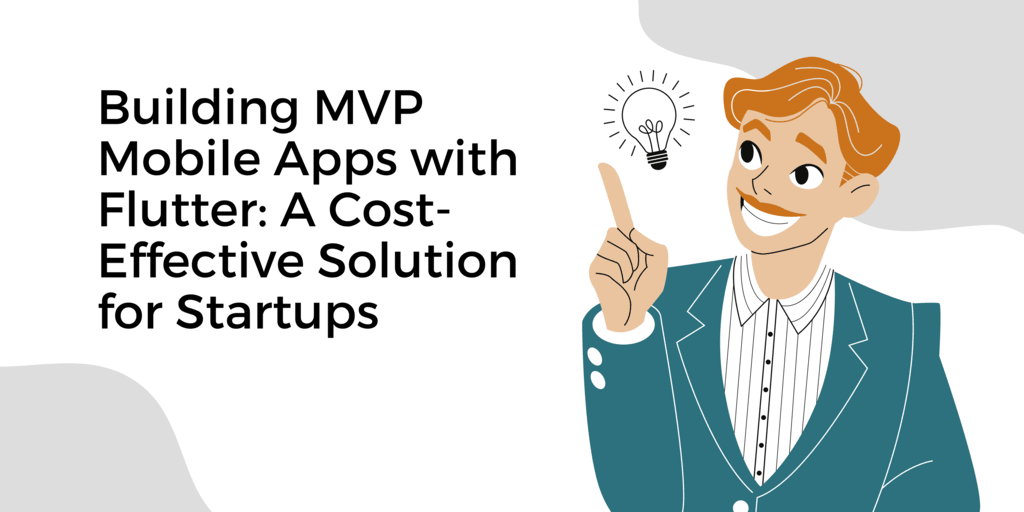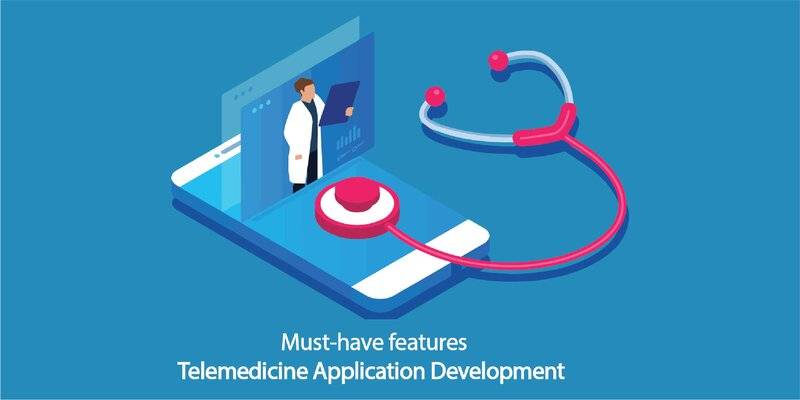Small and medium-sized businesses face an unprecedented FOMO (fear of missing out) with the growing popularity of Facebook, Instagram, WhatsApp, TikTok, Snapchat, and Tinder. The market is packed with hundreds of mobile app development companies striving to serve your businesses. Unaware of the fine lines between the myriad options that are becoming increasingly blurred.
Still, having streamlined, clearly defined processes is vital for ensuring the success of any mobile app development project. By process, we mean following the best practices, including analysis, design, development, testing, administration, and support. Most of you might not know or haven’t gone through such challenges, but companies with low capital often have a hard time managing and streamlining their app development processes. Developing an app for your business brings extensive research, and there are several answers to what you can do with your new idea for mobile apps. So with this blog, we break down all the mobile app development into 14 easy and agile steps.
Table of contents
1) Deeply research your market
2) Set a roadmap for your target audience
3) Choose between native, hybrid, and web app
4) Know your monetization options
5) Build your app marketing strategy and pre-launch buzz
6) Plan for app store optimization
7) Measure your resources
8) Build a minimum viable app
9) Ensure security measures
10) Enhance app performance
11) Determining the cost of developing an app
12) Choose the right app development company
“In most cases, only 10% of the development time is spent in the first 90% of the development. The last 10% is responsible for 90% of the development time businesses spend.
When you start developing your idea of a mobile app, you start finding answers for your hows, wheres, and when. This time you come across a lot of questions. What are the steps in developing an app? How to develop a mobile app from scratch? How much time does it take to develop an app? And most important, how to streamline the mobile app development process? To cover the third one.
We get a lot of such questions, so we decided to write a blog that addresses only the challenges businesses face when they first start with their app development ideas. Share the top insights and tips with millions of you. Help you get introduced to best practices in the mobile app development world.
How to start with your mobile app idea for startup in 2022? Let’s find out
1) Deeply research your market
Imagine you wake up with a great idea for a mobile app; you can explain it, you know it's the best invention ever, and you know it has the potential to help a lot of people- so what's next?
The real game starts here.
The first step in the mobile app development process is to talk about the project. Professional developers start with regular informal and useful briefs, to see how they can help you and move this project forward. So you started with finding a developer for your mobile app development projects. Address the following questions before moving forward with the development to ensure that you are not dating the wrong idea and that the idea is worth your time and investments.
App Objective: Why do you want to build a mobile app? Is it needed in your businesses? Is your idea appropriate or a great fit, according to your company’s/target audience needs? Do you have enough resources to promote it?
Target Audience: Who is your target audience? Who are the potential users?
App USP: What are the important features? What is the core appeal of your app? Why should your audience use your app? How will you differentiate?
Competitor Analysis: Who are your competitors? Do they have a similar application? If yes, is your idea of solving the problem a better way than theirs?
App Investment: Any app development will require money, effort, and time from you. Are you ready?
App Marketing: When and how will you promote your application? What is your promotional strategy for the early users?
2) Set a roadmap for a targeted audience
Thousands of apps are published on Google Play every day; consequently, many will remain in the shadows. Due to this hustle, it's nearly an impossible task for app creators and marketers to make their apps stand out, without having a potential target audience.
If you don't know your audience, it's more like committing online suicide. The best way is to find who your target audience is. Who is your target customer to buy from your app? Who would it be that your service benefits?
It's meaningless to keep building a brand without already recognizing who it's for. A target audience is a group of people that are interested in your product or service.
During this point, your app idea begins to emerge and develop into a working product. Defining business examples and recording detailed functional requirements will be the first steps in the analysis and planning process. The next step is to develop an app development roadmap after you've defined your app's target audience.
It may be necessary to arrange the mobile app requirements into product delivery steps if time, resources, or costs are issues. If necessary, define a minimum viable product (MVP) and make it a priority for the first launch.
Often a planning phase includes identifying the skills, and technologies needed for your app development idea. As we know, iOS and Android mobile platforms use different development technology and set of skills.
3) Choose between native, hybrid, and web app
Now it is time to make a big decision. Choosing the right app development platform among all the options. Currently, three major options are available for mobile app development.
- Native App: Native apps are built for specific platforms and OS versions, they can use device-specific hardware and software. Developers can create an application for specific platforms such as Android and iOS.
- Cross-platform app: A cross-platform/hybrid application can be released faster since only one application needs to be developed. One mobile application is built on HTML5 and runs on multiple platforms. They can be downloaded from all the app stores like native apps.
- HTML5 Web App: It's an app that appears to be a mobile page and runs on the mobile browser. This mobile application is platform-independent and offers a superior user experience and functionality. These apps are most useful in cases where either the application is not allowed by respective stores or end-users will not be motivated to download it.
4) Know your monetization options/ Earn from an mobile app
Finally, you did it. Your business now has a mobile app. Thanks to the app, your customers can interact with you like never before, and the data you are sifting through is helping you think of all kinds of new ways to market your brand.
That’s right, a mobile app can be so much more than just a beautiful interface on a mobile device. App monetization is the process of converting your app users into revenue. A mobile app can also be an additional source of revenue for your business.
So when you’re planning to build an app, you can also think about the target user base the app may attract, and the type of brands that are interested in that audience. You consider looking at the latest app revenue trends, as well as hybrid monetization. This way, you can reach high spending payers in the mobile app's categories similar to yours.
- The partnership app revenue model
A partnership or advertising model is one of the best ways to increase your customer base and monetize your application. In this mobile app revenue model, you can establish a partnership with another brand. Include their products and services, or advertise them in your app. In exchange for the promotion of your app or referral fee, in most cases.
- The paid app model
A paid app business model simply means your app cannot be downloaded for free. If users want your app, they must pay for it first.
- The free app with a subscription model
A subscription-based model is an increasingly popular strategy for monetizing apps. In this model, users can subscribe to join and pay a regular monthly fee for access to the app. For example, Netflix, Spotify, Tinder, and Disney+
- The free app with in-app purchases model
They may be game add-ons, subscriptions, premium features, and more. These extra costs, supposedly optional, are often charged to a credit card without any prior notification to the cardholder.
- The free and paid app versions model (freemium)
This mobile app monetization model lets you build up a large user base and showcase your app to get people hooked (opening the possibility of upselling)
5) Build your app marketing strategy and pre-launch buzz
Putting in marketing effort before the launch is always worth the effort. In many reports, it is recommended that you launch mobile app promotion from the very beginning of the development process, making your app concept more appealing to customers.
If you too want to get your new app in front of your target audience before you release it? Here are simple and most popular ways to market your mobile app and create the pre-launch buzz.
- Email lists
When launching email marketing, make use of the opportunity this marketing channel presents. It can be extremely successful in boosting your mobile app’s users and their retention rates, and increased return on investment (ROI) and brand awareness would be the byproducts of a successful email marketing strategy.
Seeing great competition in the app development market. Marketers use email marketing to build their brand and keep their users engaged. Compared to social media channels, email marketing is also more direct to determine that your marketing efforts are being paid off.
- SMS marketing
There are hundreds of SMS marketing tools available in the market that you can use to optimize your app marketing strategies to better reach your target users. These apps can help you run marketing campaigns and loyalty programs via mobile SMS to convert more customers, retain existing customers, and much more.
- Social Media Marketing
Though there are many app marketing strategies to choose from. But as a mobile app owner, you can't afford to miss out. App marketing using social media channels is a great way to build a community and get unbiased feedback from users. Ask for reviews and referrals, and most importantly raise awareness of your product for worthwhile traffic.
It's smart to post regular content across all your social channels, including blog entries, competitions, discussion threads, and user-generated content
- Content Creation
A good content marketing strategy can bring both luck and success to app marketing strategies. All successful apps either have good content creation strategies in place or they are not successful. A content strategy identifies how you will use content (audio, visual, and written) to achieve your business goals and attract your target audience.
- Landing page creation
It's crucial to have a landing page when you want your visitors to become customers. When promoting a mobile it is important to give attention to the landing page. This will help you get quality leads to support your app business model with your post-launch journey.
There are two types of landing pages for mobile app promotion:
- For leads and information collection (placed before the release)
- The actual page with a link to the application (placed at the time of launch)
6) Plan for app store optimization
Today, over four million apps rank on the Apple App Store and Google Play Store, so if you want to drive mobile engagement and app downloads, it would be obvious to get strategic about app store optimization for your app.
ASO (app store optimization) is a process of improving an app's visibility within the app store, so that more people are aware of it, which leads to more downloading of the app. It helps an app's visibility within the app store, which leads to more people discovering, checking out, and downloading the app. Though ASO is not a ‘one and done project, it needs continuous attention and consistent updates,”
If you are looking out for app store optimization, you can mainly focus on the top two app store platforms, the Google Play store, and the Apple Store. “
7) Measure your resources
Choosing a technology for developing mobile apps is more of a one-time investment. Different developers can choose between different approaches for app development. There are no-code and low code tools available in the market that are more popular among the business, looking for a less complex and affordable mobile app development.
However, the technology you are going to choose will have a prompt impact on the quality and functionality of your app. There can be many different ways to and with different tools. For example, there are native mobile development tools, but also cross-platform build a mobile app with different development tools. For example, there are native mobile development tools, but also cross-platform mobile development tools.
Choosing between quality and cost may seem like a trade-off, so it's best to lay everything out on the table upfront. And, in the future, evolving technologies may involve extensive reworking, which is both costly and time-consuming.
The best way to avoid such scenarios is to examine the characteristics and requirements of your app before choosing a mobile app development tool, and then choose the finest tool to help you develop functions and features to match those criteria.
You can also seek the assistance of a mobile app development company, which can assist you in choosing the best decision.
8) Build a minimum viable app
A mobile app building is complex and requires a lot more than we think. They are not easy to build and are cheap to maintain. So before you get started with your app development process and SaaS for your client, you should consider launching a minimal viable product. Instead of investing a lot of money in creating an unaffordable mobile app. You are not sure whether your users might like it or not.
MVP refers to a scaled-down version of a product that's released to the public for testing and validating the concept and viability on the market. A simple page includes the company name, an explanation of the software, and a link to download the desktop or mobile app.
As soon as your MVP has been released, it is obvious to collect feedback from your users. This helps you generate new ideas grounded in user behavior research, which will inform subsequent versions of the product. It is imperative to test, learn and measure, and to test again until the product is finalized.
9) Enhance app performance
Performance has to do with how fast or slow your app loads if the app crashes when it reaches a peak in user activity, and how seamless certain features (like payments) work. Performance is a byproduct of multiple factors: the server, mobile device, network, and programming of the app itself, which is one of the factors of app quality that indicates how the app behaves when it is experiencing high load sizes and in various other circumstances.
Users' retention, ratings, downloads, conversions, and revenue directly correlate with mobile app performance. A high-quality app that meets or exceeds user expectations will keep users coming back while improving their perception of your brand. And strengthening the bond you have with them.
10) Security measures
Mobile app security is the biggest and most critical challenge for the online app business model. The security of mobile applications isn't a feature or an advantage - it is a minimum requirement. One breach of trust could cost your organization more than dollars. As well as losing trust among your employees, customers, and shareholders.
Since there is such a great volume of mobile applications in modern times. As a result, legitimate security controls must be connected while developing an application, along with the tendency to create malicious applications.
By addressing security concerns properly and minimizing risks, users' experiences and trust in the organization will be enhanced.
Certain security measures can be used to avoid such attacks:
- Source Code Encryption
- Penetration Tests
- Secure the Data-in-transit
- Level & Database Encryption
- Latest Cryptography Techniques
- High-level authentication
- Secure the Backend
- Minimize Storage of Sensitive Data
11) Determining the cost of developing an app
When every other business is looking for low price app development in India. You should choose value over the cost of mobile app development. You should consider the closer alignment of the key app development factors and concerns in the early stages for even better results.
The cost of your app depends on many factors, including app type, functionality, design elements, complexity, selected IT vendor and region, and development approach.
Several factors that we have discussed above will contribute to estimating the cost of mobile app development. Measuring the cost of mobile app development can still be tricky. Since there are many factors to consider.
“The price tag of an app is not for the cost, but also for the value it brings.
What does it cost to develop an app? When launching an app development project, this is likely one of the first things that app brands and developers will want to know the answer to. The most fundamental and vital component of any mobile app development budget is an app development cost estimate.
- Choose the right app development company
As companies look for new and innovative ways to engage customers, the market for mobile apps is growing steadily. With custom mobile apps, you can meet and exceed your business objectives. Custom solutions should meet your business's needs, and even enable it to expand as your needs grow.
How to find the best mobile app developer
When looking at options from a broader angle, you will be able to understand a variety of mobile-specific challenges. You can always find, compare and choose what fits you best for your application development needs.
We are CodeFencers
We've helped companies develop innovative and competitive mobile solutio ns by drawing on our experience and diversification of thinking. We offer excellence, reliability, and perfection in the form of mobile app development, web development, custom software development, enterprise solutions, UI/UX design, and digital marketing services.
Find out the best ways how CodeFencers’ Mobile’s product design and app development services can help you build better mobile relationships with your customers.
Let’s begin, start a conversation today.
Here we conclude:
The fact that innovations in software development are crossing all boundaries does not mean all projects will succeed. Is true for all. Success in mobile app development depends on many factors.
Though, a fantastic way to get started with your app idea. But there is more you need to get your ship to the shore. Even if you have completed all the stages, have a great approach with appropriate methods and skills.
There might be hundreds of challenges waiting for you at the end. The steps are to understand, plan, estimate, commit, track, deliver, review, adjust, and repeat.




